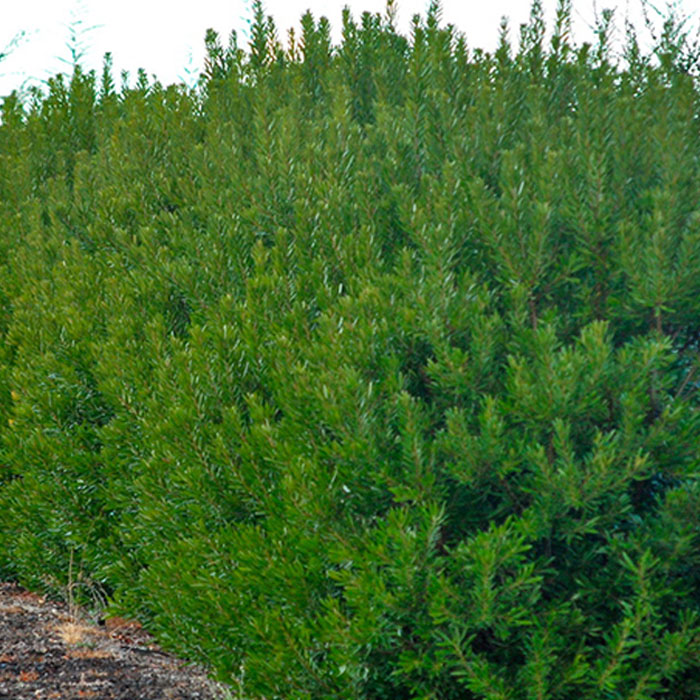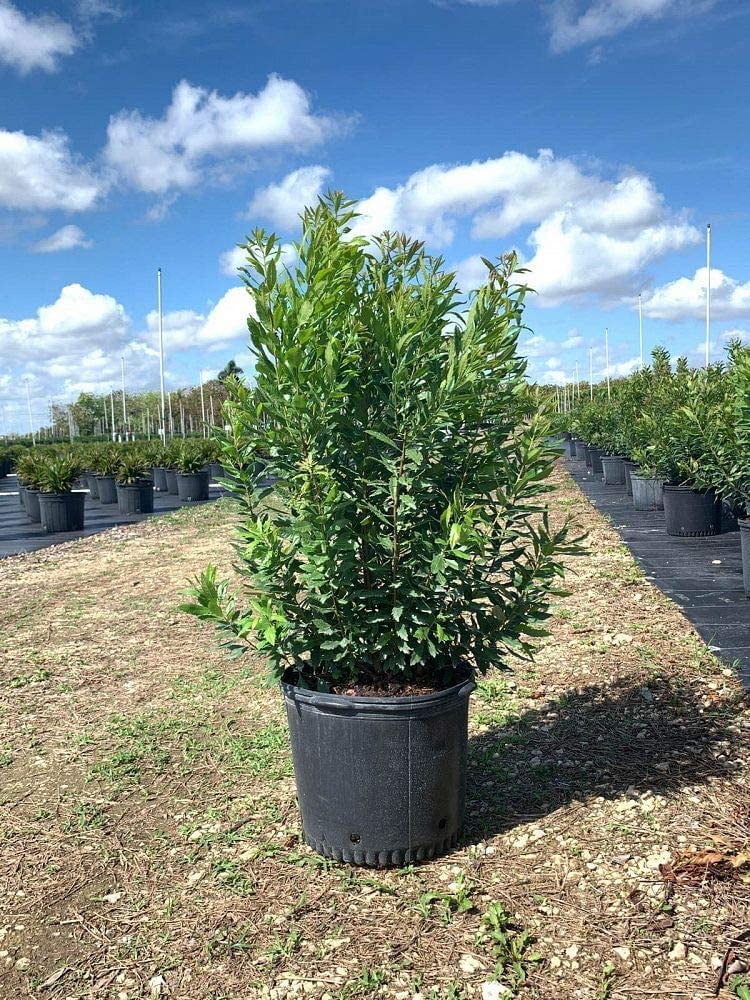

By 1991, no known fire had killed this plant's roots. cerifera's root system is fire-resistant. In contrast to the flammability of its top growth, M. Because the leaves, stem, and branches contain flammable aromatic compounds, a specimen of M. In the latter situation, only the most recent primary growth may be incinerated. cerifera is often killed by wildfires unless the fire is very small or transient. This plant's roots possess root nodules, which harbor a symbiotic species of actinomycotal bacteria, which fixes nitrogen at a faster rate than do the legumes. Birds' digestive systems remove the wax from the fruit, a prerequisite for germination. cerifera will also provide habitat for the northern bobwhite quail. In winter, the seeds are important foods for the Carolina wren and species of tree sparrow. The fruit is a source of food for many bird species, including the northern bobwhite quail and the wild turkey. Those growing in damper situations with richer soil are more tree-like with bigger leaves.

Specimens in drier and sandier areas are shrub-like, have rhizomes and smaller leaves. This species occurs in two forms, but there is no clear dividing line between them, many intermediate forms occurring. cerifera can also reproduce clonally through runners. The species flowers from late winter to spring, and bear fruit in late summer or fall. The female flowers develop into fruit, which are globular and surrounded by a natural wax-like coating. Male flowers have three or four stamens, and are surrounded by short bracts. The plant is dioecious, with male and female flowers borne in catkins on separate plants. The glandular leaves are long, have a leathery texture and serrated edges, and contain aromatic compounds. cerifera is often one of the first plants to colonize an area. It also grows in Bermuda and the Caribbean. Wax Myrtle can be successfully cultivated as far north as the New York City area and southern Ohio Valley. In nature, it ranges from Central America, northward into the southeastern and south-central United States. cerifera can weather coastal storms, long droughts, and tropical high temperatures. It is adaptable to many habitats, growing naturally in wetlands, near rivers and streams, sand dunes, fields, hillsides, pine barrens, and in both coniferous and mixed-broadleaf forests. Myrica cerifera is a small tree or large shrub, reaching up to 14m tall. It sees uses both in the garden and for candlemaking, as well as a medicinal plant. Its common names include southern wax myrtle, southern bayberry, candleberry, bayberry tree, and tallow shrub. New growth is evident by a bright green color and is easily broken from the original branches.Myrica cerifera is a small evergreen tree or large shrub native to North and Central America and the Caribbean. These shrubs grow quickly, so frequent trimming is necessary to maintain a particular height. The wax myrtle will spread by growing new shoots from the roots of a larger plant.

A hardy plant, the wax myrtle will grow in wet, dry, and sandy conditions once it has taken root.
#Wax myrtle zone full
This plant likes full sun, but it will tolerate partial shade. Wax myrtles can be propagated from cuttings or seeds. The wax myrtles are highly flammable and spread quickly. The VEC finds numerous mockingbird and wren nests in the branches of this shrub. The wax myrtle provides excellent cover and food for birds and other wildlife. Berries were once boiled and used as wax for candles. The leaves have a spicy fragrance and are still used today for candle scents. Wax myrtles are very drought tolerant and are found in various types of habitats. Wax myrtles can grow up to 5 feet per year. Fruit clusters may be 1/8 of an inch wide. The leaves range from 1 ½ inches to 4 ½ inches long. These shrubs reach heights and widths of 15 feet or more. Berries start out green and turn pale blue in the winter. The wax myrtle produces berries beginning in late summer. Only female plants produce berries, as long as male plants are nearby. Small clusters of berries coated with wax replace these flowers. This evergreen produces very small flowers in the early spring, which last through June. The bark on some of the shrubs develops into a grayish-white color. The wax myrtle is a broadleaf, evergreen shrub with multiple trunks. Southern Wax Myrtle, Bayberry, and Candle Berry


 0 kommentar(er)
0 kommentar(er)
